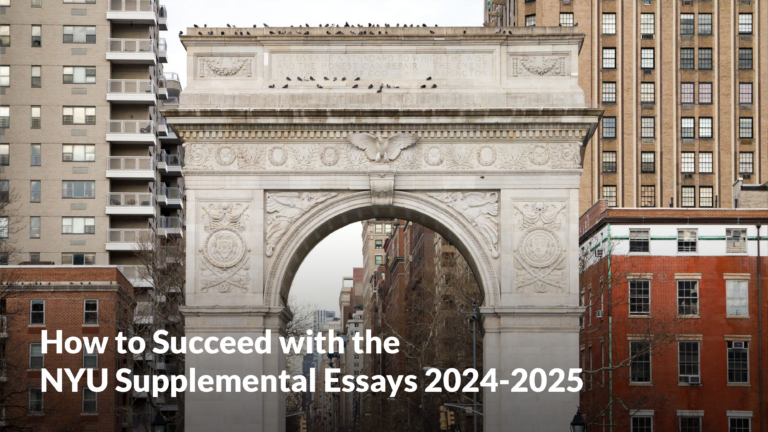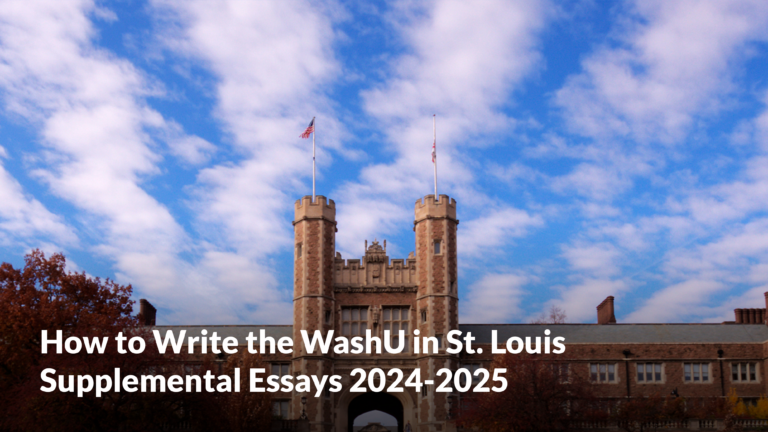Should You Apply to an Early Decision II School?
You might be anxiously awaiting your ED I decision, or you might not have applied in the first ED round at all. No matter what your circumstance, you may be wondering whether you should consider an early decision II (ED II) school. But how do you know if you’re ready to commit to an institution, especially when you’re juggling regular decision applications at the same time?
Regardless of why you’re considering the route, early decision II provides you with the opportunity to convey your commitment to a school you might have had your eyes on for years. To help you decide if you should take the ED II plunge, I have provided you with a more concrete picture of this second early round, the list of colleges which offer this option, and how to decide whether you should or should not apply to an early decision II school.
What is Early Decision II?
Early decision II is offered by several colleges as an option for you to apply in January – usually around the same time as the regular decision submission dates, but you get to hear back in February. When you apply ED II, you sign the same binding early decision agreement as ED I students. So, when you pick an early decision II college, you make a commitment to attend the school if you are accepted. Colleges might assume that you applied to an ED I option that fell through. So, admissions officers prefer to choose the majority of their early acceptances from the ED I pool, since all of the slots are open at the time of decisions and ED I students demonstrated the most enthusiasm first.
If you were rejected or deferred from a school during the ED I round, you’re more than welcome to apply ED II to another college, especially if you believe that you have a fair shot. However, if your ED I college sent you the dreaded rejection letter, you can’t apply to the same institution for ED II. If you were deferred, you must withdraw your application to your ED I school if you are admitted ED II, and won’t be able to find out if you end up being admitted to your ED I school or not. But, if you’re ready to commit to a school, ED II is a useful policy to keep in mind in case your ED I school fell through or you weren’t able to get your materials ready by November 1st or 15th.
Which Schools Offer Early Decision II?
While ED I is an option that is offered at the majority of universities, your school choices for ED II are far more limited. About 70 colleges have an early decision II route. It has gotten more popular in recent years and continues to become an option that more places offer, but make sure that the school you’ve got in mind offers the second early decision opportunity in the first place. Use the table below (organized alphabetically) to take note of all the early decision II schools and their respective deadlines.
| School | ED II Deadline |
|---|---|
| American University | January 15 |
| Babson College | January 2 |
| Baylor University | February 1 |
| Bates College | January 10 |
| Bennington College | January 15 |
| Boston College | January 2 |
| Boston University | January 6 |
| Bowdoin College | January 2 |
| Brandeis University | January 1 |
| Bryant College | January 15 |
| Bryn Mawn College | January 1 |
| Bucknell University | January 15 |
| Carleton College | January 15 |
| Carnegie Mellon University | January 3 |
| Case Western Reserve University | January 15 |
| Claremont McKenna College | January 10 |
| Colby College | January 3 |
| Colgate University | January 15 |
| College of the Atlantic | January 15 |
| College of Wooster | January 15 |
| Colorado College | January 15 |
| Connecticut College | January 15 |
| Davidson College | January 5 |
| Denison College | January 15 |
| Dickinson College | January 15 |
| Emory University | January 1 |
| Franklin & Marshall College | January 16 |
| George Washington University | January 5 |
| Gettysburg College | January 15 |
| Grinnell College | January 5 |
| Hamilton College | January 6 |
| Harvey Mudd College | January 5 |
| Haverford College | January 5 |
| Johns Hopkins University | January 2 |
| Kenyon College | January 15 |
| Lafayette College | January 15 |
| Lehigh University | January 1 |
| Macalester College | January 1 |
| Middlebury College | January 3 |
| Mount Holyoke College | January 3 |
| New York University | January 1 |
| Northeastern University | January 1 |
| Oberlin College | January 2 |
| Occidental College | January 10 |
| Pitzer College | January 5 |
| Pomona College | January 8 |
| Reed College | December 20 |
| Rensselaer Polytechnic Institute | December 15 |
| Rhodes College | January 15 |
| Saint Olaf College | January 15 |
| Santa Clara University | January 7 |
| Sarah Lawrence College | January 15 |
| Scripps College | January 5 |
| Sewanee: The University of the South | January 15 |
| Skidmore College | January 15 |
| Smith College | January 1 |
| Swarthmore College | January 4 |
| Syracuse University | January 5 |
| Trinity College | February 1 |
| Tufts University | January 6 |
| Union College | January 15 |
| University of Chicago | January 2 |
| University of Miami | January 6 |
| University of Richmond | February 1 |
| University of Rochester | January 5 |
| Vanderbilt University | January 1 |
| Vassar College | January 1 |
| Villanova University | January 15 |
| Wake Forest University | January 1 |
| Washington University in St. Louis | January 2 |
| Washington and Lee University | January 1 |
| Wellesley College | January 1 |
| Wesleyan University | January 1 |
| Whitman College | January 10 |
| William and Mary | January 5 |
As you can see, you have options here! Although none of the Ivy League schools offer ED II, the list contains other top tier national universities and liberal arts colleges such as the University of Chicago, Washington University in St. Louis, Tufts University, Swarthmore College, Wellesley College, Pomona College, Bowdoin College, and more.
Choosing one of these as your early decision II school can definitely help you get an edge over the competition, especially considering how selective colleges have been recently. For example, last year, Colby had an overall acceptance rate of 9.6%, but an early decision acceptance rate of 36%. Applying ED II would emphasize your dedication to the university of your choice.
Why or When Should You Apply to an Early Decision II School?
- If you weren’t ready for ED I – You could consider an early decision II school if you weren’t able to finish your essays on time in November – you might have also waited to retake the SAT or have your grades from senior fall to apply. Whatever the reason, if the timing wasn’t right for the first round, you might want to take advantage of the later ED II deadline. If your grades from the fall are better than your junior year grades or you’ve since taken on a leadership role in one of your extracurriculars, you’ll have a greater chance of competing with strong students than you would have had you applied ED I.
- If your second-choice school offers ED II – While you might be feeling sad if your ED I school didn’t work out, it’s time to pick yourself up and think about how to move forward strategically. Was there another college that you had been considering applying ED I? Does it also offer an early decision II option? If so, here’s your chance to emphasize your commitment towards another school that matters to you almost or equally as much!
- If you would be happy committing – Speaking of commitment, it’s important to ask yourself whether you would truly be happy at your ED II institution for the next four years if you were accepted. While you can’t predict the future, consider whether you’re excited by what you know about the school so far – don’t just do it for the sake of applying ED again! Remember that breaking out of the early decision agreement isn’t recommended you’re unable to fulfill the provided financial aid package, so you need to make an informed decision before you decide to apply to an early decision II school.
- The ED advantage – Often, schools use early decision applications to monitor yield, since admitted students are bound to attend. As a result, just like ED I, ED II provides you with the advantage of automatically demonstrating the willingness to enroll. When you apply in the early decision II round, you’ll be submitting right alongside RD students, but those students aren’t committing. Schools are going to be looking at you very seriously in that wave of applicants. So, even statistically speaking, applying early decision II provides you with a greater advantage than regular decision.
When Should You NOT Apply to an Early Decision II School
- If you have an RD school you’d be happier attending – Since early decision II applications are typically due at or around the same time as the regular decision round, you’ll be completing your ED II requirements alongside the materials for your other schools. As you do this, you might realize that there’s another institution that you really love that doesn’t offer an ED II option. Since you have to withdraw your applications to all other schools if accepted ED II, you might be left wondering what could have been had you not applied ED II.
- If your supplemental essays aren’t ready – Though you compete against a smaller number of applicants when applying ED II, you shouldn’t take your admission for granted. Even if you apply early decision II, you need to bring your A-game. Don’t add a new school to your list just because it offers ED II. If you have to rush through your “why this school” essay without getting enough time to research or revise, you won’t give yourself a strong shot.
- If your numbers aren’t comparable – Researching a college is very essential before applying, no matter the round. Don’t just apply ED II to UChicago because it’s ranked highly. You need to take a look at the university’s data for accepted students. Do your GPA and test scores fit the standard for the school? If it’s an institute that’s far out of reach, you probably won’t be admitted, even with the ED II boost. Think realistically about your choices before you apply to an early decision II college.
- You would have to forfeit your ED I school – If you’ve been deferred from your ED I choice or an early action school, you’re probably planning to send a letter of continued interest. Remember that if you were deferred by your ED I school but are accepted by your ED II college, you’ll have to withdraw your ED I application (without finding out the verdict) and attend your ED II school due to the binding agreement. So, if you genuinely believe in your chances to be admitted to your first college, you might want to reconsider your decision.
Deciding whether or not to apply to an early decision II school is not a choice that should be made lightly. You need to think about your chances compared to admitted students, along with whether you’d be truly happy attending the university if you were accepted. If you believe that you’re ready to commit, you should go ahead and apply ED II, as it’s an effective way of convincing admissions officers that your dedication to the college is genuine. Good luck!


